Cool auburn hair color and tones 2023

Cool auburn hair color and tones 2023Auburn hair is a beautiful and versatile hair color that combines red and brown tones. There are several shades and tones of auburn hair, each with its own unique characteristics. Here are some cool auburn hair color options and tones:
- Light Auburn: This shade is a soft and subtle version of auburn with lighter red and brown tones. It can create a warm and natural look, especially on those with fair or light skin tones.
- Copper Auburn: This shade leans more towards the reddish side, with vibrant copper undertones. It’s a bold and eye-catching choice that suits a range of skin tones.
- Mahogany Auburn: This tone features deep red and brown hues with a rich, earthy feel. It adds depth and intensity to your hair, making it a great option for those who want a darker auburn look.
- Strawberry Auburn: This tone incorporates lighter, strawberry blonde highlights into auburn hair, resulting in a multidimensional and lively appearance. It works well for those with fair to medium skin tones.
- Dark Auburn: This shade has deeper brown undertones, giving it a darker and more mysterious look. It can be almost black in certain lighting but reveals its auburn warmth in the sun.
When choosing an auburn hair color, consider your skin tone, eye color, and personal style to find the shade that complements you best. It’s also advisable to consult with a professional hairstylist who can provide guidance based on your specific features and preferences.
Auburn hair color
Auburn hair color is a beautiful and popular choice that combines red and brown tones to create a warm and rich hue. It falls in between shades of red and brown, giving it a unique and eye-catching appearance. Here are some key features of auburn hair color:
- Warm and Earthy: Auburn hair has a warm and earthy tone that adds depth and dimension to your hair. It can range from light to dark, depending on the intensity of the red and brown pigments.
- Versatility: Auburn hair color comes in various shades and undertones, allowing you to find the perfect match for your skin tone and personal style. Whether you prefer a subtle or bold look, there is an auburn shade that suits your preferences.
- Complementary to Various Skin Tones: Auburn hair color complements a wide range of skin tones. Lighter shades of auburn often work well with fair or light skin tones, while darker auburn shades can enhance medium to deeper skin tones.
- Natural Appearance: Auburn hair color can create a natural look, particularly when the shade closely matches your natural hair color. It blends well with different hair textures and can be customized to suit your desired level of intensity.
- Maintenance: Like any hair color, maintaining the vibrancy of your auburn hair requires proper care. Regular touch-ups and the use of color-safe products can help preserve the richness of the color and prevent it from fading.
Remember, hair color results can vary depending on your starting hair color, so it’s always a good idea to consult with a professional hair colorist who can assess your hair and provide personalized advice. They can also recommend the best hair care routine to keep your auburn hair looking its best.
Dark auburn hair
Dark auburn hair is a stunning and rich shade that blends deep red and brown tones. It is a darker version of the classic auburn hair color, offering a more intense and mysterious look. Here are some key characteristics of dark auburn hair:
- Deep and Intense: Dark auburn hair has a deep and rich color, with more prominent brown undertones. The red tones are still present but tend to be more subdued compared to lighter auburn shades.
- Warmth and Depth: The combination of red and brown in dark auburn hair creates a warm and inviting appearance. The depth of the color adds dimension and complexity, making it an eye-catching choice.
- Versatility: Dark auburn hair complements a range of skin tones, particularly those with medium to deep complexions. It can provide a striking contrast against fair skin and enhance the warmth in warmer skin tones.
- Natural-Looking: Dark auburn hair can give a natural appearance, especially if the shade is close to your natural hair color. It blends well with different hair textures and can be customized to achieve the desired level of darkness.
- Low Maintenance: Dark auburn hair typically requires less maintenance compared to lighter shades. The darker tones are less prone to fading, and regrowth is less noticeable. However, it’s still important to use color-safe hair care products and protect your hair from excessive heat and sun exposure.
When considering dark auburn hair, consult with a professional hair colorist who can help determine the best shade and technique to achieve your desired look. They can also provide guidance on aftercare and maintenance to keep your dark auburn hair looking vibrant and beautiful.
Auburn hair formula
Creating the perfect auburn hair color often requires a customized formula that takes into account your starting hair color and desired end result. Hair color formulas can vary depending on the brand and specific products used. However, I can provide you with a general guideline for creating an auburn hair color formula:
- Determine your starting hair color: Assess the natural or current color of your hair. This will help determine the amount of lightening or color deposit required to achieve the desired auburn shade.
- Choose the desired undertone: Decide on the specific undertone you want for your auburn hair. Consider whether you prefer a more red or brown base, as this will influence the formula.
- Select the developer strength: The developer is the product that activates the hair color. The appropriate developer strength depends on your starting hair color and the desired level of lift or deposit. Consult the instructions on the hair color product for guidance.
- Mix the hair color and developer: Follow the instructions provided with your chosen hair color brand. Generally, you’ll mix the hair color and developer in a 1:1 ratio or as specified by the product instructions. Mix thoroughly until the color is well blended.
- Strand test: Before applying the color to your entire head, perform a strand test. Take a small section of hair and apply the color mixture. Leave it on for the recommended processing time, then rinse and dry. This will help you assess the color result and make any necessary adjustments.
- Apply the color: Section your hair into manageable sections and apply the color mixture evenly from roots to ends. Follow the recommended processing time provided by the hair color brand. Be sure to wear gloves and protect your clothing and skin.
- Rinse and condition: Once the processing time is complete, rinse your hair thoroughly with cool water until the water runs clear. Apply a color-safe conditioner to nourish and hydrate your hair.
Remember, achieving the desired auburn hair color may require multiple steps and professional expertise, especially if you’re making a significant change from your natural color. It’s recommended to consult with a professional hairstylist or colorist who can assess your hair and create a personalized formula for the best results.
pale auburn color
Pale auburn hair color is a beautiful and delicate shade that combines light red and brown tones. It’s a softer version of traditional auburn, with a subtle and ethereal quality. Here’s a general guideline for creating a pale auburn hair color:
- Determine your starting hair color: Assess the natural or current color of your hair. If your hair is already light or blonde, achieving a pale auburn may be easier. If you have darker hair, you may need to lighten it first to create a suitable base.
- Choose the right hair color products: Select a hair color brand that offers shades specifically labeled as pale auburn or light auburn. Look for shades with more subtle and lighter red undertones, leaning towards a strawberry blonde hue.
- Select the developer strength: The developer strength depends on your starting hair color and the level of lift required. Generally, a lower volume developer (around 10 or 20) is suitable for lightening or depositing color without excessive damage.
- Mix the hair color and developer: Follow the instructions provided with your chosen hair color brand. Mix the hair color and developer in the recommended ratio, usually 1:1. Mix thoroughly until the color is well blended.
- Perform a strand test: Before applying the color to your entire head, perform a strand test. Take a small section of hair and apply the color mixture. Leave it on for the recommended processing time, then rinse and dry. This will help you assess the color result and make any necessary adjustments.
- Apply the color: Section your hair into manageable sections and apply the color mixture evenly from roots to ends. Ensure complete coverage of all strands. Follow the recommended processing time provided by the hair color brand.
- Rinse and condition: Once the processing time is complete, rinse your hair thoroughly with cool water until the water runs clear. Apply a color-safe conditioner to nourish and hydrate your hair.
It’s important to note that achieving the desired pale auburn color may require multiple sessions, especially if you’re starting with darker hair. Additionally, consulting with a professional hair colorist can help ensure the best results and minimize the risk of damage or undesired outcomes.
Neutral skin tone hair colors
If you have a neutral skin tone, you have the advantage of being able to pull off a wide range of hair colors. Neutral skin tones have a balanced mix of warm and cool undertones, allowing for versatility in hair color choices. Here are some hair color options that tend to complement neutral skin tones:
- Warm Brown: Opt for rich, warm brown shades like chestnut, caramel, or chocolate. These colors add warmth to your complexion and create a harmonious balance with your neutral undertones.
- Honey Blonde: Opt for golden or honey blonde shades. These warm, sun-kissed tones can brighten your face and bring out the warmth in your skin.
- Soft Auburn: Choose soft auburn or coppery tones. These warm red shades can add vibrancy to your hair without overwhelming your neutral skin tone.
- Ash Blonde: Consider ash blonde tones for a cooler hair color option. Ash blonde shades with cool, ashy undertones can complement your neutral skin tone and create a sophisticated and modern look.
- Dark Espresso Brown: Deep, dark espresso brown shades can create a striking contrast against your neutral skin tone. This rich and cool-toned brown can add depth and dimension to your hair.
- Platinum Blonde: If you’re feeling adventurous, platinum blonde can be a stunning option for those with neutral skin tones. The cool, almost silver-like shade can create a dramatic and edgy look.
Remember, it’s always a good idea to consult with a professional hairstylist who can assess your skin tone, consider your personal preferences, and provide tailored advice based on your specific features. They can help you find the perfect hair color that enhances your neutral skin tone and brings out your best features.
Auburn Brown Hair
Auburn brown hair is a beautiful and versatile hair color that combines rich brown tones with hints of red or copper. It offers a warm and multidimensional look, making it a popular choice among those looking for a natural yet eye-catching hair color. Here are some key features and characteristics of auburn brown hair:
- Warmth and Depth: Auburn brown hair combines the richness and depth of brown with the warmth and vibrancy of auburn. The result is a hair color that is both inviting and full of dimension.
- Versatility: Auburn brown hair suits a wide range of skin tones, depending on the specific shade and undertones. It can complement fair, medium, and deep complexions, adding warmth and radiance to the overall look.
- Natural-Looking: Auburn brown hair can create a natural and effortless appearance, especially when the shade is close to your natural hair color. It blends well with different hair textures and can be customized to achieve a subtle or more pronounced auburn effect.
- Dimensional Highlights: To enhance the multidimensional aspect of auburn brown hair, you can add highlights or lowlights in complementary shades. For example, golden or caramel highlights can accentuate the warmth, while ash or chestnut lowlights can add depth and contrast.
- Low Maintenance: Auburn brown hair typically requires low maintenance compared to more dramatic hair colors. The natural-looking blend of brown and auburn tones allows for smoother regrowth and reduced noticeable fading over time.
When considering auburn brown hair, it’s helpful to consult with a professional hair colorist who can assess your hair’s current condition, determine the most suitable shade of auburn brown, and create a customized formula tailored to your specific needs. They can also provide advice on aftercare and recommend products to maintain the vibrancy and health of your hair color.
Warm red hair color
Warm red hair colors are vibrant and fiery shades that add warmth and intensity to your overall look. These shades are rich in red and orange undertones, creating a bold and eye-catching appearance. Here are some popular warm red hair color options:
- Copper Red: Copper red is a warm, metallic shade that resembles the color of a penny. It has a mix of red and orange tones, creating a vibrant and head-turning look.
- Ginger Red: Ginger red hair color is a beautiful blend of red and golden undertones. It has a warm and sunny appearance, reminiscent of a natural ginger hue.
- Auburn Red: Auburn red is a rich and warm red hair color with brown undertones. It’s a deep and intense shade that can range from medium to dark red, creating a luxurious and captivating look.
- Strawberry Blonde: Although technically a blonde shade, strawberry blonde has warm red undertones that give it a distinct and radiant appearance. It’s a lighter, more delicate option for those who want a warm red hue.
- Mahogany Red: Mahogany red is a dark and intense red-brown shade. It has a warm and earthy undertone that adds depth and dimension to your hair.
When choosing a warm red hair color, consider your skin tone and personal style. Warm red shades tend to complement those with warm or neutral undertones, but they can be customized to suit a variety of complexions. It’s always advisable to consult with a professional hair colorist who can assess your hair, consider your desired intensity, and help you select the perfect warm red shade that enhances your overall appearance.
Red hair color
Red hair color is a bold and vibrant choice that can make a dramatic statement. It’s a unique and eye-catching color that comes in a variety of shades and tones, allowing you to find the perfect red hue to suit your style and complexion. Here are some popular red hair color options:
- Bright Red: This is a vivid and intense red shade that is bold and attention-grabbing. It’s a vibrant and fiery color that can range from a true red to a more orange-red tone.
- Cherry Red: Cherry red hair color is a deep and rich red shade with dark undertones. It resembles the color of ripe cherries and has a luxurious and sultry look.
- Auburn Red: Auburn red is a warm and earthy red hair color that combines red and brown tones. It creates a beautiful and natural-looking result with a mix of richness and depth.
- Copper Red: Copper red hair color has a warm and metallic appearance, resembling the color of a copper penny. It’s a vibrant shade with orange undertones that adds a fiery and eye-catching look to your hair.
- Burgundy Red: Burgundy red is a deep and dark red shade that often has purple or violet undertones. It’s a rich and sophisticated color that adds depth and intensity to your hair.
When choosing a red hair color, it’s important to consider your skin tone and eye color to find a shade that complements your features. Cooler red tones like burgundy can work well with fair or cool-toned complexions, while warmer red shades like copper or auburn can enhance warmer or olive skin tones. Additionally, consulting with a professional hairstylist or colorist is recommended, as they can assess your hair and provide personalized advice based on your specific features and desired outcome.
Cool-toned auburn hair colors often have hints of red, but they lean towards the cooler spectrum, incorporating tones like plum, mahogany, or even violet. These shades are great for individuals who want the warmth of auburn without the strong orange or copper undertones. Here are some cool auburn hair color ideas and tones:
- Cool Auburn:
- A balanced cool auburn color combines red and brown tones with cooler undertones, creating a rich and sophisticated look.
- Mahogany Auburn:
- Mahogany auburn features deep red-brown hues with cool undertones. This shade is elegant and can appear almost plum-like in certain lighting.
- Plum Auburn:
- Plum auburn is a cool, deep, and rich shade that leans towards purple. It adds a unique and bold touch to traditional auburn hair.
- Burgundy Auburn:
- Burgundy auburn incorporates cool, wine-red tones into the hair, creating a deep and luscious color.
- Violet Auburn:
- Violet auburn has purple undertones that add a cool and vibrant element to the hair. This shade can be subtle or more pronounced, depending on your preference.
- Eggplant Auburn:
- Eggplant auburn is a deep, cool-toned purple-brown that creates a dramatic and eye-catching look.
- Auburn with Mauve Highlights:
- Adding mauve highlights to a cool auburn base can create a multidimensional effect, adding depth and interest to the hair.
- Cool Auburn Balayage:
- Balayage is a technique that allows for a gradual transition of color. A cool auburn balayage can blend the base color with cooler highlights for a natural, sun-kissed effect.
- Cool Chestnut Auburn:
- Cool chestnut auburn combines cool brown tones with auburn, creating a nuanced and dimensional color.
- Auburn with Smoky Undertones:
- Adding smoky undertones to auburn hair can create a cooler, edgier look. This may involve incorporating shades of gray or charcoal for a modern touch.
- Cool Reddish Brown Auburn:
- This shade combines cool reddish-brown tones with auburn for a sophisticated and earthy color.
- Auburn Ombre with Cool Ends:
- Ombre involves a gradual transition from one color to another. In auburn hair, having cool-toned ends can add a trendy and contemporary flair.
When choosing a cool auburn hair color, consider your skin tone, personal style, and maintenance preferences. Consulting with a professional colorist can help you achieve the desired shade while maintaining the health of your hair.

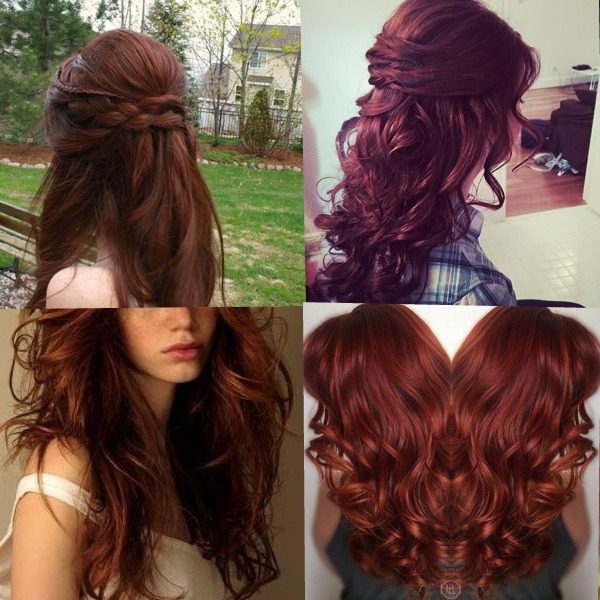
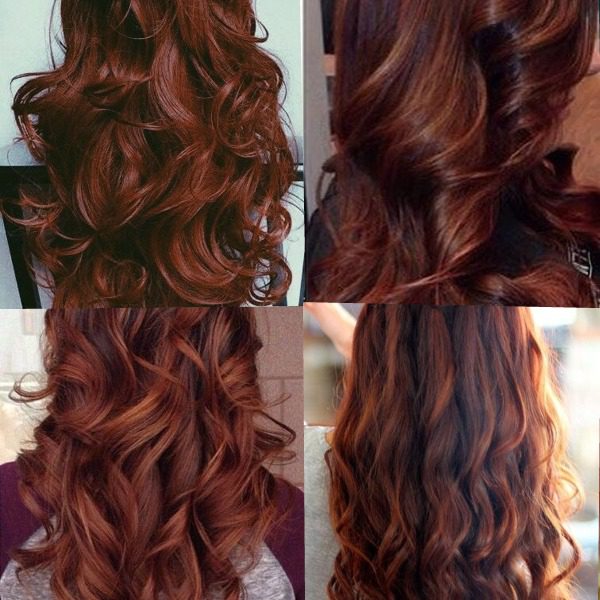
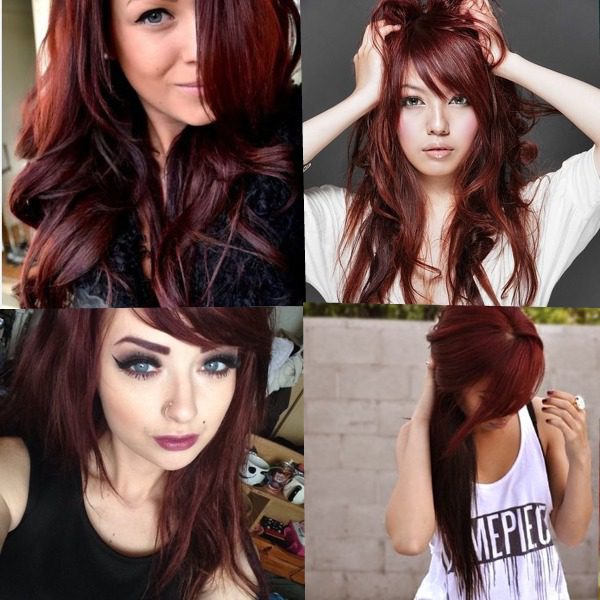
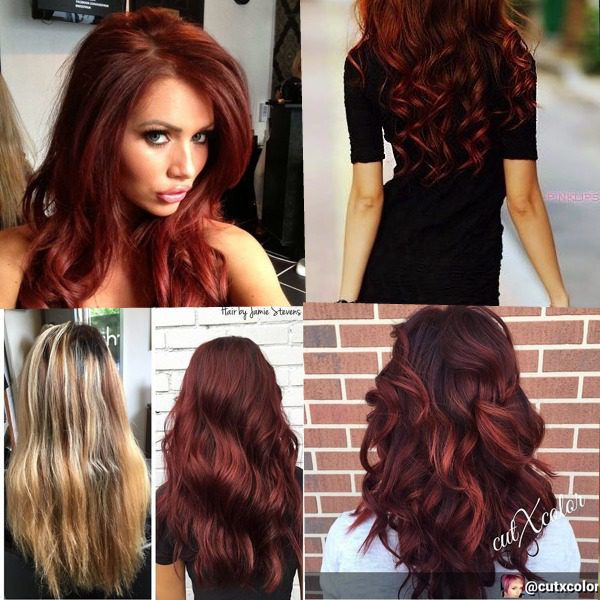

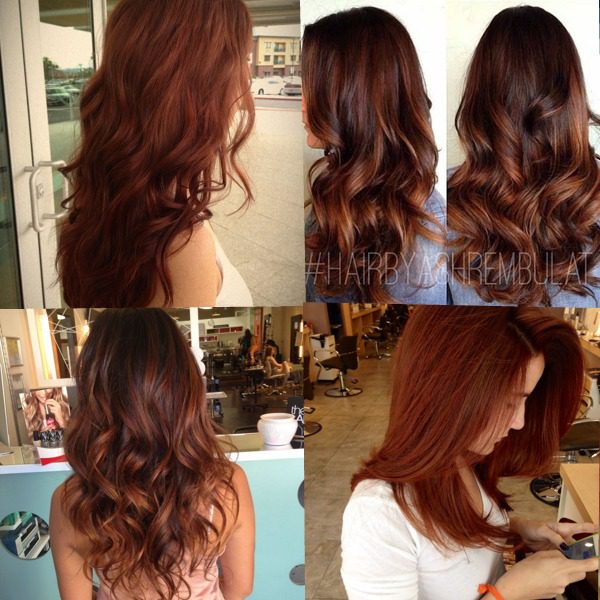
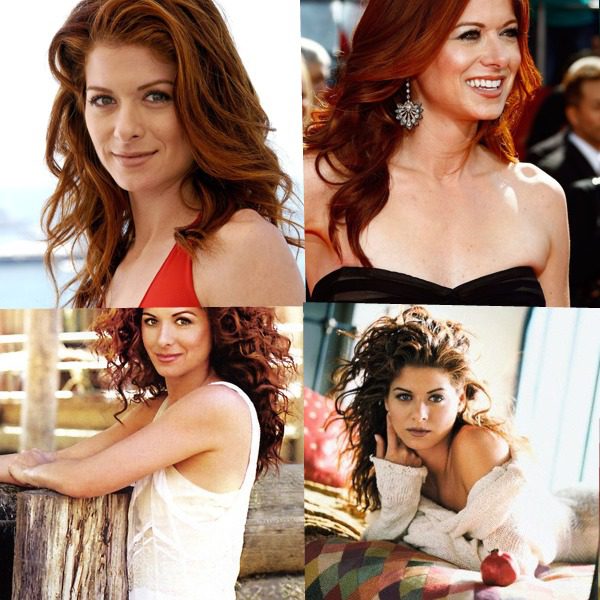





















































































































































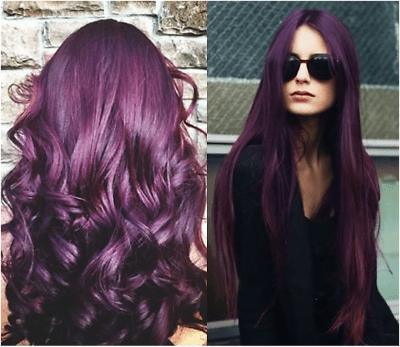
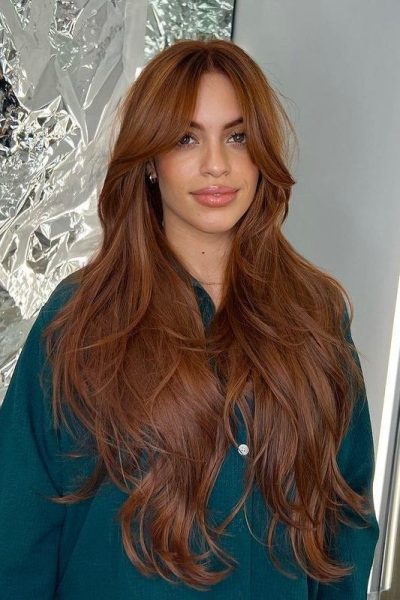




No comments yet.